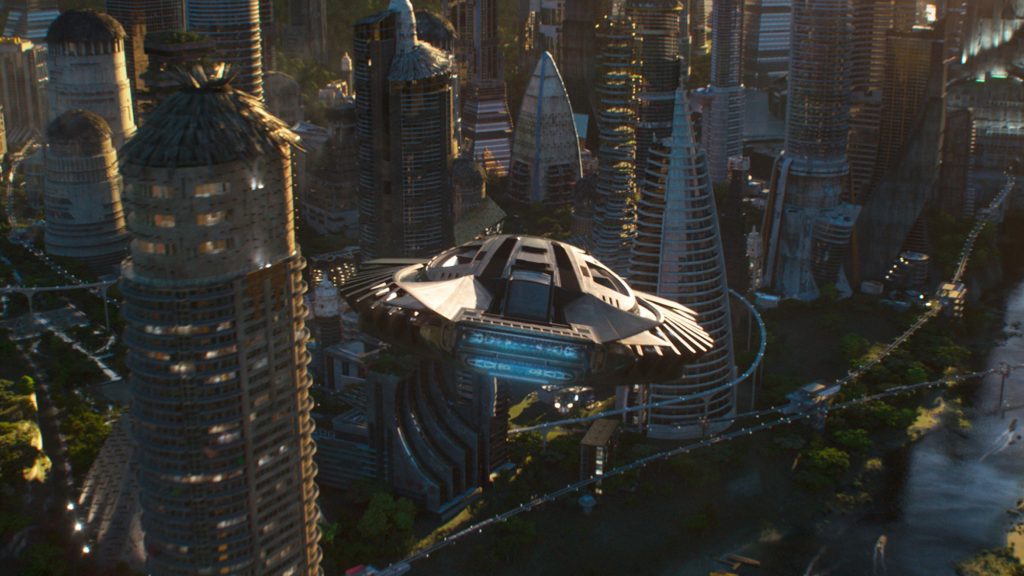Community, Leadership, Experimentation, Diversity, & Education
Pittsburgh Arts, Regional Theatre, New Work, Producing, Copyright, Labor Unions,
New Products, Coping Skills, J-O-Bs...
Theatre industry news, University & School of Drama Announcements, plus occasional course support for
Carnegie Mellon School of Drama Faculty, Staff, Students, and Alumni.
CMU School of Drama
Subscribe to:
Post Comments (Atom)

4 comments:
Black Panther is an incredible film in all areas. All of the design elements in this film were breathtakingly beautiful and the more articles I read about the research and development that went into creating all of these spectacular components of this film, from the tour of Africa done by the composer of the score to the color history that war researched for the costume composition, the more I am seeing how spectacular the process of creating the film was. Hearing about where production designer, Hannah Beachler, got her inspiration for the architecture and even the building material is fascinating. It makes you realize that inspiration is all around you. In this case Beachler was inspired by a combination of the grandiose, Buckingham Palace and the magnificent structures of Zaha Hadid, and m=the more modest, like the mud houses and thatched roofs that exist all over the African continent. I love hearing where designers inspiration comes on because it shows us that we don’t only need to draw our inspiration from the incredible and the extremely powerful, but it can come from the smallest most modest of things that we find incredible and inspiring in our own ways.
As soon as I think I’ve read enough articles about the design of Black Panther another one pops up and immediately catches my eye. I’m familiar with the work of Iraqi-British architect Zaha Hadid, and can completely see the reference of the beautiful curvature and elegance that is present in her vast buildings in the scenic design of Black Panther. However, something that the article began to familiarize me with that I previously had no idea about was the definition of Afro-Futurism-- having now done a bit of research into what the concept entails I can also begin to see how all the designers I’ve read about so far-- the costume designer, scenic designer, and even the jewelry designer-- have pulled inspiration from this ideology. It reminds me slightly of “steampunk” in that it combines the antiquated with the completely rendered future, and therefore creates something vaguely familiar but entirely invented at the same time. It was also interesting how many aspects of the interiors of these buildings of Wakanda took elements of line and curves from nature to resemble waterfalls or tree branches. This, again, gives us as modern viewers a reminder of home that’s spun in an innovative way.
I was so impressed with sets in the Back Panther movie. It was truly inspirational to be able to see a realist visualization of what would have been possible for black people if we were not colonized, in pond off. I know that a lot of the grander of this city is based of the idea that they had a supper powerful material that helped them grow so fast, but I still can’t unsee thus utopia from my head of how these buildings and architecture could have evolved. Have never been to Africa (yet) I don’t know much about the architecture of modern African cites. But I hope that the are going in the direction displayed in the movie. I hope this movies inspires new young nerdy africana architects and just create some amazing cites. I hope its not too polluted with colonialism type building and cities. I was also really impressed with how many places the designer used as a resource to design for this movie. You don’t thing about it but as the center of the world and the birth content of our specie, it would actually make since that a little bit of every culture would be represented.
I think one thing that I loved most about Black Panther, or what I appreciated the most as a designer was all of the thought and research gone into creating the world of Wakanda. The more I read articles about the process and why things were put in place and designed makes me fall more in love with the images I see. The idea of technology mixing with this African country that was considered to be third world and behind the times, the combination of old and new, all of it is connected and I love how it is communicated through the plot of the film and the designs of the costumes and set. Like the designer said about the circles, they connect everything. You cannot have the new without the old designs. You cannot move forward in the future without having a past. A past, a tradition is so very important to the African people of Wakanda and that shows as this new technology devolves from such an ancient material.
Post a Comment